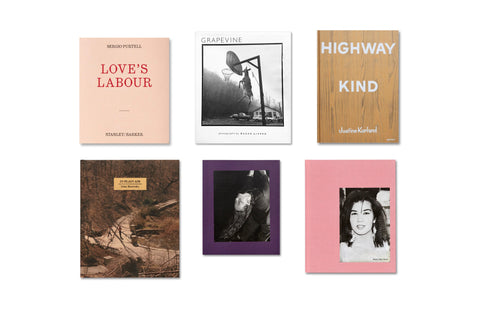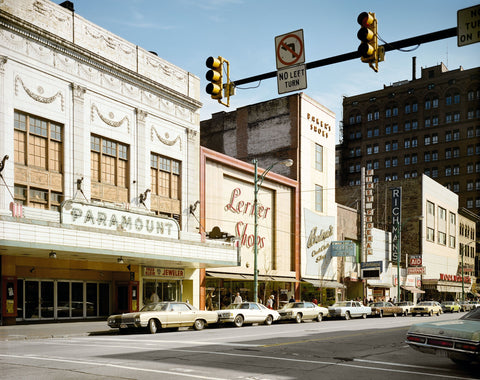
In the early 1950s the chiaroscuro masterpieces of grandmaster Roy DeCarava arrived to establish an aesthetically refined high bar for photographs of Black subjects that possessed a culturally informed depth. Work reflective, in his words, of “a creative expression, the kind of penetrating insight and understanding of Negroes which I believe only a Negro photographer can interpret.”
Dawoud Bey represents the first generation of young Black photographers radicalized by the Black Arts Movement to also fall under the hypnotic sway of DeCarava’s work and then forge their own paths to lensing the everyday beauty of the Black community. By the post-revolutionary 1970s there was no miracle or challenge for this generation of artists in seeing the iconographic faces of the Black community as works of art. Instead they faced the test of making art equal to the proliferation of the diverse beauty in the community’s DNA.

After a screening of Julie Dash’s totemic 1991 feature film Daughters of the Dust, cinematographer Arthur Jafa, who’d just won that year’s Sundance Festival award, was asked by a startled and bewildered Black audience member, “How did you make everyone look so beautiful?” Jafa modestly replied, “I just shot what was already there.”
Beyond technique though, what the audience member was responding to was Jafa’s enthralling treatment of dark-skinned Black femininity – a recognition which Black women actors speak of to this day and which is still hardly commonplace on major Hollywood film sets where many do their own make-up, or hire knowledgeable peers, because their skin tones are seen as too problematic for standard industry practitioners. In this pursuit of rendering “what was already there”, Jafa was influenced by those of Bey’s generation, as well as those of the preceding generation who had formed the Kamoinge collective of Black photographers – a group who by the mid-70s were extracting and emulsifying masterful imagistic narratives from the casually profound ‘sweet flypaper’ of Black life which DeCarava and Langston Hughes had essayed upon in their book-length collaboration of the same name. The Kamoinge group documented their extensions of DeCarava’s genius in a series of monographs published in the 70s as The Black Photographers Annual. The years of Bey’s street portraits, 1988-1991, coincide with the second presidential term of Ronald Reagan. Within the national Black community that timespan is also commonly referred to as a “the crack era” and “the golden age of hip hop”. Neither marker in time is untethered from the occupant of the Oval Office in those years.
The mainstream media’s predominant stories about Blackfolk in that time were either about gang murders or drug selling and addiction. Occasionally something might slip in about the activism against apartheid in South Africa or the anti-racist demonstrations being mounted in New York City seeking justice for the killings of unarmed Blackfolk by police and white neighborhood mobs.
There were several plagues and pathological stigmata visited upon the Black community’s house in that stretch of years, but did they encompass the whole story for an African American population 40 million strong? Dawoud Bey’s Street Portraits regally bid (and not beg) to differ.

The late poet, playwright and scholar Larry Neal once observed that, “To be Black in this country is to always affirm something.” A truth to which we might add: it is also to always perform and represent something in the name of reclaiming the humanity of Blackfolk from the anti-Black hate campaigns of minstrelsy, lynching postcards, coon artefacts, and scholar Donald Bogle’s litany of infamous Hollywood stereotypes Toms, Coons, Mulattoes, Mammies, and Bucks – not to mention the failed, inhumane intended weaponization of the Zealy daguerreotypes.
In his own documentary film-making practice, Jafa makes a distinction between the collected testimony of those Blackfolk he identifies as “specialists” (creatives and academics, primarily) and those from the communal congregation, whom he cites as “the uncommon folk”.
In Bey’s practice he is obviously not just the specialist but also the editorial invisible hand.

In poring over his highly selective, captured treasure trove of vibrant and generous Black visages, we observe Bey’s repeated pursuit of not just our community’s divergent and many-splendored “un-commoners”, but also those among them who are already quite well composed – “very pulled together”, as the saying goes – and extremely self-possessed.
These portraits attest to the power of “the Black gaze” – how Black- folk’s eye-to-eye looking-back game can meet any righteous or even reckless eyeballing judgment the world might bring with an equal and opposing optical Super-Kryptonian heat-visioned (and haute-visioned) force – a stare, a glare, an inquiring dare, a wry comeback, an introspective indifference, a casual summation, an audacious insouciance, an Amazonian, eye-rolling snapback.
Excerpt from 'Dawoud Bey: Griot With A Camera' by Greg Tate, from Street Portraits, published in April 2021.

Embossed hardback with two tip-ins
24 x 28.5cm, 120 pages
€45 £40 $55
The signed edition includes a slip signed by the artist and bound into the inside back cover.
€50 £45 $60





